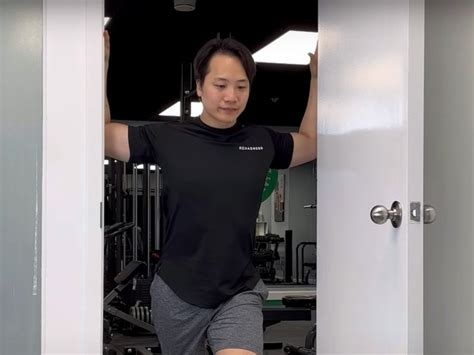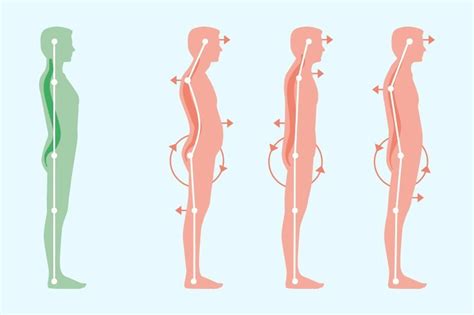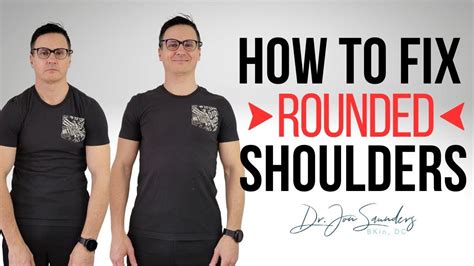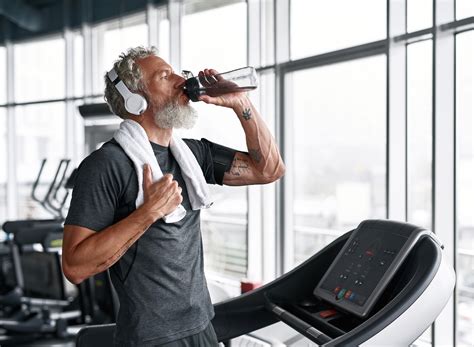Understanding Rounded Shoulders
Rounded shoulders, also known as kyphosis, is a common postural imbalance characterized by a forward curving of the upper back, which pushes the shoulders forward and inward. This often results from prolonged periods of sitting, especially at computers, excessive use of smartphones, or certain lifestyle habits that encourage a hunched-over posture. While it might seem like a minor aesthetic issue, untreated rounded shoulders can lead to significant discomfort, pain, and even long-term health problems.

The Impact of Poor Posture
Beyond the visual aspect, rounded shoulders can have a detrimental impact on your overall well-being. They can cause chronic pain in the neck, shoulders, and upper back, contribute to tension headaches, and even restrict breathing by compressing the rib cage. Over time, this imbalance can lead to muscle weakness in the upper back and tightness in the chest and front of the shoulders, creating a cycle that perpetuates the poor posture. Correcting this issue is not just about looking better; it’s about improving your health, increasing comfort, and boosting your confidence.
Common Causes and Contributing Factors
While modern lifestyles are a major culprit, several factors contribute to rounded shoulders:
- Prolonged Sitting: Especially at desks, computers, or driving, often without proper ergonomic support.
- Smartphone Use: The ‘tech neck’ phenomenon, where the head is constantly tilted forward.
- Weak Upper Back Muscles: Insufficient strength in the rhomboids and lower trapezius.
- Tight Chest Muscles: Overly tight pectorals pull the shoulders forward.
- Lack of Physical Activity: General weakness and poor muscular balance.
- Inappropriate Lifting Techniques: Rounding the back instead of engaging the core and legs.
- Genetics or Structural Issues: Less common, but can be a factor.
Strategies to Correct Rounded Shoulders
Fixing rounded shoulders requires a multi-faceted approach focusing on awareness, stretching, strengthening, and environmental adjustments.
1. Cultivate Postural Awareness
The first step is simply noticing your posture throughout the day. Set reminders to check in with yourself. Imagine a string pulling the crown of your head upwards, gently tuck your chin, and let your shoulders relax down and back. Avoid slouching and try to maintain a neutral spine.
2. Incorporate Stretching Exercises
Tight muscles in the chest and front of the shoulders are primary contributors to rounded shoulders. Stretching these areas can help release tension and allow your shoulders to naturally pull back.
Effective Stretches:
- Doorway Chest Stretch: Stand in a doorway, place your forearms on the frame with elbows bent at 90 degrees. Lean forward gently until you feel a stretch across your chest. Hold for 30 seconds.
- Pectoral Stretch (Wall): Stand facing a wall, place one hand flat against the wall, palm down, fingers pointing away from your body. Gently rotate your body away from your arm until you feel a stretch in your chest and shoulder. Hold for 30 seconds per side.
- Thread the Needle: Start on all fours, then thread one arm under your body, palm up, until your shoulder and head rest on the floor. Hold for 30 seconds per side.

3. Strengthen Your Upper Back Muscles
Weakness in the muscles that pull your shoulders back and down allows the chest muscles to dominate. Strengthening your upper back (rhomboids, rear deltoids, and lower trapezius) is crucial for restoring balance.
Targeted Strengthening Exercises:
- Resistance Band Pull-Aparts: Hold a resistance band with both hands, arms extended in front of you at shoulder height. Pull the band apart, squeezing your shoulder blades together. Slowly return to the start. Perform 10-15 repetitions.
- Rows (Dumbbell or Cable): Whether bent-over dumbbell rows or seated cable rows, focus on pulling your shoulder blades together with each rep. Aim for 3 sets of 8-12 repetitions.
- Face Pulls: Using a cable machine or resistance band, pull the rope/band towards your face, leading with your elbows and squeezing your shoulder blades.
- Y-Raises (Prone): Lie face down on the floor or an incline bench. With arms extended, raise them to form a ‘Y’ shape, squeezing your upper back.

4. Optimize Your Ergonomics
Your environment plays a huge role in maintaining good posture, especially if you spend a lot of time at a desk.
- Monitor Height: Position your monitor so the top third of the screen is at eye level.
- Chair Support: Use a chair that supports the natural curve of your lower back. Sit with your feet flat on the floor and knees at a 90-degree angle.
- Keyboard and Mouse: Keep them close to your body to avoid reaching, which can strain your shoulders.
- Regular Breaks: Stand up, stretch, and move around every 30-60 minutes.
![5 Steps to Setting Up an Ergonomic Workstation [Infographic]](/images/aHR0cHM6Ly90czQubW0uYmluZy5uZXQvdGg/aWQ9T0lQLjVzaGd1TExiSHJLRFlIZDZXeXh2WndIYU9KJnBpZD0xNS4x.webp)
5. Practice Mindfulness and Breathing
Deep breathing exercises can help expand the rib cage and encourage better posture. Mindful movement practices like yoga or Pilates can also significantly improve body awareness, core strength, and flexibility, all of which contribute to better posture.
When to Seek Professional Help
While self-correction is effective for many, if you experience persistent pain, numbness, tingling, or find that your posture isn’t improving with consistent effort, it’s wise to consult a healthcare professional. A physical therapist, chiropractor, or orthopedic specialist can accurately diagnose the underlying cause and provide a personalized treatment plan, which may include manual therapy, specific exercises, or other interventions.
Conclusion
Correcting rounded shoulders is a journey that requires commitment and consistency, but the benefits for your health, comfort, and overall appearance are well worth the effort. By integrating regular stretching and strengthening exercises, being mindful of your posture, and optimizing your environment, you can effectively reverse rounded shoulders and achieve the better posture you desire. Start today, and take a proactive step towards a stronger, healthier you.





